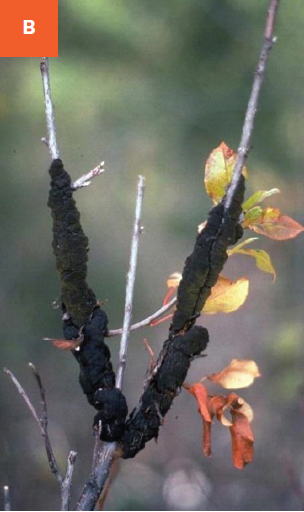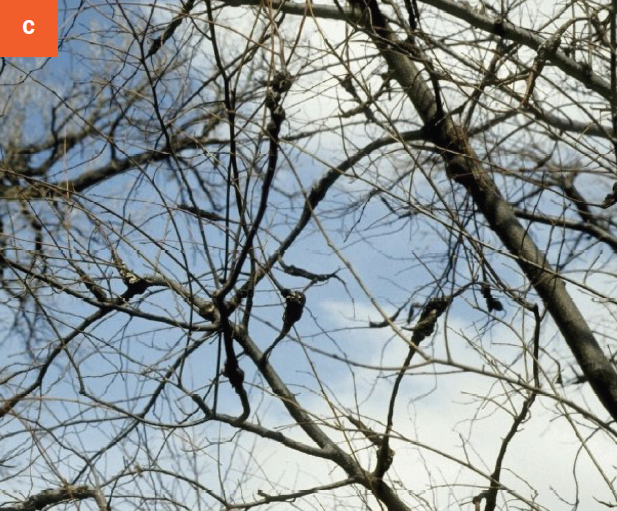Black Knot
Apiosporina morbosa (fungus)
HOST Cherry, chokecherry, plum, and other ornamental Prunus species
DAMAGE/SYMPTOMS This fungal disease is characterized by the development of thick, black, gall-like swellings on twigs and branches. The galls can girdle the branches of highly susceptible trees, causing leaf wilt and branch dieback beyond the galls.
DISEASE CYCLE The fungus overwinters in the black, knobby galls. During wet periods in the spring, spores are released and infect young green shoots or wounded branches. New galls develop during the summer and early fall and may be covered in olive-green spores in the following spring. The new galls turn black and hard two years after infection.
MANAGEMENT Black knot can be managed by pruning out existing galls in late winter. Make the pruning cut at least four inches below the infection. Disinfect pruning tools between cuts with 70% ethyl alcohol or a standard household disinfectant spray. Dispose of the galls to reduce inoculum levels. Fungicides can be applied in spring to protect young or highly susceptible trees. Fungicide treatments must be applied when flower buds are beginning to open and may have to be repeated depending on the product used, label instructions, and weather conditions. Fungicides with one of the following active ingredients have shown good control of black knot: chlorothalonil or thiophanate-methyl. Strictly follow instructions on the pesticide labels.
A Black knot gall developing on young shoot. B Mature black knot galls causing dieback of branches. C Tree with multiple black knot galls.



